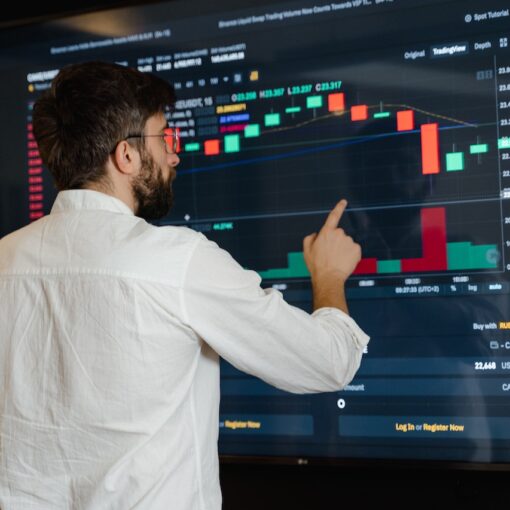Systems Thinking and Linear Thinking are two approaches to problem-solving and decision-making that can significantly impact the effectiveness of a given solution. Understanding the differences between these two approaches can offer valuable insights into how to tackle complex issues within various disciplines or industries.
At its core, Systems Thinking focuses on the interconnectedness and interactions among different components within a system, recognizing that they cannot be understood in isolation. By taking a holistic view, this approach helps identify underlying patterns and root causes of problems, ultimately leading to more effective solutions. On the other hand, Linear Thinking prioritizes a step-by-step, cause-and-effect mentality, relying on past data and existing solutions to form a singular, direct path to problem-solving.
While both methodologies have their strengths and weaknesses, recognizing when to employ each approach can be crucial for creating effective and sustainable solutions. As the world grows increasingly complex, understanding the difference between Systems Thinking and Linear Thinking can make all the difference in successfully navigating the challenges of today’s ever-evolving landscape.
Understanding Systems Thinking and Linear Thinking
Definitions and Fundamentals
Systems thinking is an approach that focuses on understanding the interconnections and relationships between different components within a system, while linear thinking follows a step-by-step, cause-and-effect approach to problem-solving. Systems thinkers primarily concentrate on finding patterns in chaos, whereas linear thinkers tend to focus on individual parts and isolated occurrences.
Key Fundamentals:
- Systems thinking: Wholes, patterns, connections, relationships, engagement, and design
- Linear thinking: Individual parts, isolated occurrences, separation, and fragmentation
The Birth of Two Perspectives
The birth of these two perspectives can be attributed to the increasing complexity of problems faced in modern times. As organizations and societies grow more intricate, our awareness and intelligence need to adapt to these complexities. Systems thinking emerged as a response to this need for a more holistic approach to problem-solving, emphasizing a bird’s eye view of the bigger picture. In contrast, linear thinking has been a traditional mode of reasoning since ancient times, with its roots in classical logic and mathematics.
Similarities and Differences
Although both systems thinking and linear thinking deal with problem-solving and decision-making, their approaches vary significantly. Some similarities and differences include:
Similarities:
- Both aim to solve problems, make decisions, and understand the world.
- Both employ structured methodologies to reach conclusions.
Differences:
- Systems thinking emphasizes the interrelationships and patterns between system elements, while linear thinking focuses on individual components and isolated events.
- Systems thinking promotes a flexible and adaptable mindset, whereas linear thinking often relies on fixed assumptions and predetermined pathways.
- Systems thinking enables a better understanding of complex issues and promotes long-term solutions, whereas linear thinking might lead to short-term fixes that don’t address the root cause of a problem.
By acknowledging the merits of both systems thinking and linear thinking, we can better navigate the challenges of the modern world by applying the most suitable perspective to each situation.
Applications of Systems Thinking and Linear Thinking
Education
In the field of education, systems thinking enables educators to identify the underlying issues and their root causes within the complex web of components that influence learning outcomes. They can then design more effective educational strategies that account for these interdependencies. On the other hand, linear thinking is most appropriate for simple problems with straightforward cause-and-effect relationships. For example, when teaching a specific skill, like solving an equation, linear thinking can help educators develop a step-by-step approach to instruct the students.
Business and Organization
Businesses and organizations often benefit from systems thinking as it provides a holistic view of complex situations, understanding how multiple factors interact to drive performance, and navigating change effectively. By leveraging connections between components, managers can develop innovative solutions that lead to sustainable success. In contrast, linear thinking is most useful in well-defined, repetitive processes that demand more predictable outcomes. This includes tasks like assembly lines, where linear thinking ensures efficiency and consistency.
Arts and Sciences
In the arts and sciences, systems thinking helps practitioners understand the broader context of their work, taking into account interconnected elements that affect outcomes. For example, an ecological study could examine the intricate relationships between species, their habitats, and human influences to develop sustainable conservation strategies. Linear thinking, meanwhile, has its place in controlled experiments and the development of theories based on clear cause-and-effect relationships, such as testing the impact of a single variable on a specific outcome.
Technology and Innovation
Technology and innovation thrive on systems thinking as it encourages the development of holistic solutions that account for a multitude of interconnected factors. For example, designing a new transportation system requires the understanding of social, environmental, and economic influences. This type of thinking also fosters collaboration between diverse disciplines and fosters innovative solutions that can transform entire industries. Linear thinking, on the other hand, is particularly useful in technology and innovation when refining specific aspects of a product or process – ensuring they perform optimally within well-defined parameters.
Advantages and Disadvantages
Benefits of Systems Thinking
Systems thinking offers a comprehensive way of understanding complex systems, as it focuses on the relationships between system components rather than individual components. This enables organizations to uncover patterns in the relationship between inputs, processes, and outputs, which can lead to better decision-making and problem-solving. For instance, systems thinking helps in identifying the root causes of issues rather than treating symptoms, promoting long-term success and effectiveness.
Moreover, systems thinking fosters a learning-oriented mindset, as it encourages iterative feedback and continuous improvement. This approach enhances organizational adaptability and responsiveness to change, ensuring sustained growth and success. Systems thinkers also cultivate loyalty and advocacy, as they actively involve stakeholders in creating strategies, taking into account diverse perspectives and interests.
Drawbacks of Systems Thinking
Despite its advantages, systems thinking comes with a few downsides. For one, it can be time-consuming and resource-intensive to implement, as understanding and mapping complex systems may require specialized expertise. Additionally, examining interdependencies and feedback loops may lead to higher costs, as organizations invest in monitoring and analysis tools.
Furthermore, the dynamic nature of systems thinking can sometimes hinder consensus and decision-making speed, as stakeholders may find it challenging to agree on the best course of action amid constantly changing conditions.
Strengths of Linear Thinking
Linear thinking, on the other hand, has its unique strengths. It simplifies complex situations by breaking them down into smaller, more manageable tasks, focusing on cause-and-effect relationships. This approach allows for precise planning and execution, driving efficiency and productivity.
Another advantage of linear thinking is its ease of communication and implementation. Because it focuses on specific, measurable goals, linear thinking can be accessible and straightforward for stakeholders in pursuing shared objectives. As a result, linear thinking may often lead to quicker decisions and faster accomplishments.
Weaknesses of Linear Thinking
However, linear thinking has its limitations. For example, it can overlook certain aspects of complex situations that involve multiple variables and interrelated components, as it tends to view problems as a series of isolated steps. This reductionist approach can lead to several unintended consequences or partial solutions, which may not effectively address the root cause of the problem.
Linear thinking also falls short when dealing with dynamic environments that are prone to rapid change. Relying on linear assumptions in such conditions can lead to flawed decision-making and suboptimal outcomes, as well as missed opportunities for innovation and improvement.
In conclusion, both systems thinking and linear thinking have their respective strengths and weaknesses. Ultimately, the effectiveness of each approach depends on the specific context and the objectives being pursued.
Tools and Techniques for Implementing Systems Thinking
Visualization Techniques
Visualization techniques help bridge the gap between complex systems and human intuition. They can effectively represent the relationships within systems, making it easier to understand their dynamics and identify areas for improvement. Common visualization methods include system maps, causal loop diagrams, and stock and flow diagrams. These maps provide a visual representation of the system’s components, dependencies, and feedback loops, allowing for a deeper understanding of the system as a whole1.
Scenario Planning
Scenario planning is an essential tool in systems thinking that helps organizations proactively navigate future uncertainties by considering multiple possible outcomes. Rather than relying solely on intuition or past experience, scenario planning uses evidence-based methodologies to identify a range of plausible scenarios and assess their consequences. This approach enables organizations to anticipate potential risks, explore alternative strategies, and adapt to a variety of future conditions2.
Dynamic Modeling
Dynamic modeling is a powerful technique used in systems thinking to simulate and analyze complex, nonlinear systems. This approach takes into account the interdependencies among system components, allowing for a more accurate representation of how changes in one part of the system can affect the whole3. By incorporating real-world data and constraints, dynamic models can help identify the key drivers of system behavior, generate insights, and inform decision-making.
Dynamic modeling techniques include system dynamics, agent-based modeling, and discrete-event simulation. Each of these techniques has specific strengths and applications, depending on the complexity and nature of the system being analyzed.
Integration of Systems Thinking and Linear Thinking
Balancing the Two Approaches
In the world of problem-solving and decision-making, both systems thinking and linear thinking play a crucial role. Systems thinking emphasizes understanding the relationships between different parts of a system, focusing on the whole rather than individual elements. On the other hand, linear thinking is built on logical connections and processes, often dealing with cause and effect relationships.
To achieve the best results, it is essential to balance these two approaches. While systems thinking can help identify patterns and connections between seemingly unrelated elements, linear thinking can provide clarity and logical structure. For instance, employing a systems thinking approach can help marketing professionals identify how various aspects of a campaign are interrelated, while using linear thinking can ensure a well-organized launch plan.
Examples of Successful Integration
There are various scenarios where the integration of systems thinking and linear thinking can lead to successful outcomes:
- Job Performance: In the workplace, utilizing both systems thinking and linear thinking can optimize one’s job performance. A combination of both approaches can help employees discern complex interdependencies within their work environment and establish logical steps to improve their productivity.
- Scientific Research: In the field of science, researchers can greatly benefit from the integration of these two perspectives. Systems thinking helps unravel the complexities behind interconnected variables in scientific experiments, while linear thinking allows for the development of hypotheses and empirical testing methods.
- Business Strategy: Organizations that strive for success can adopt a blend of systems thinking and linear thinking in their strategic decision-making processes. Systems thinking can aid in identifying the interconnectedness of different factors that may impact a business, while linear thinking helps set forth a clear, logical plan to address these challenges.
In summary, the integration of systems thinking and linear thinking offers valuable insights and enables a comprehensive understanding of complex issues. By blending these approaches, individuals and organizations can make more informed decisions and navigate complex systems more effectively.
Developing A Systems Thinking Mindset
Increasing Awareness and Intelligence
Developing a systems thinking mindset requires increasing your awareness and intelligence about the systems around you. This involves understanding that the world is interconnected and that everything is a part of a larger system. Instead of focusing on a linear cause and effect approach, a systems thinker recognizes the complex relationships involved in any given situation.
One way to enhance your awareness is to continuously learn and expose yourself to new information, perspectives, and experiences. This helps you develop the ability to see beyond the surface level of a problem and identify the underlying causes and factors that contribute to it. By gaining this awareness, you can make more informed decisions and better predict the potential outcomes of your actions.
Recognizing Patterns and Relationships
A key aspect of systems thinking is the ability to recognize patterns and relationships within the system. This contrasts with linear thinking, which often focuses on a single cause and effect. By identifying patterns in the behavior and interactions of various components, you can better understand how changes in one area may ripple throughout the entire system.
To develop this skill, practice observing and analyzing how different elements within a system are connected and how they influence each other. Consider the potential consequences of any change you make, and be mindful of the feedback loops that may occur. By recognizing these patterns and relationships, you can implement solutions that address the root cause of a problem, rather than simply addressing its symptoms.





